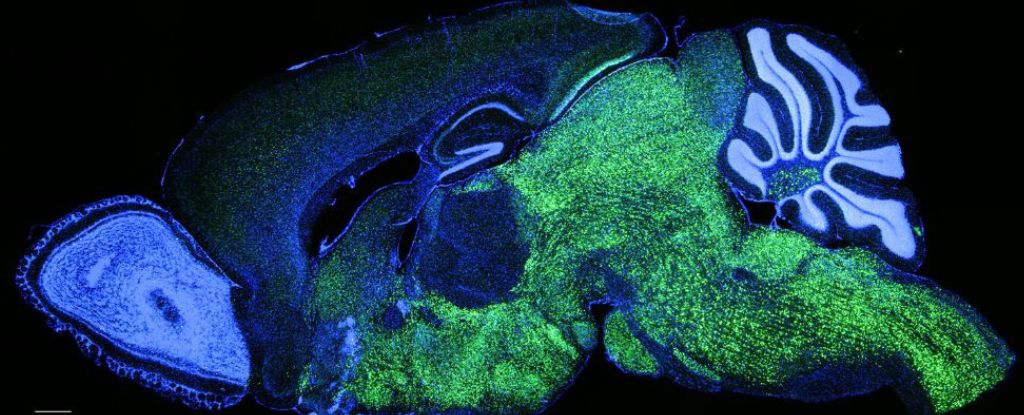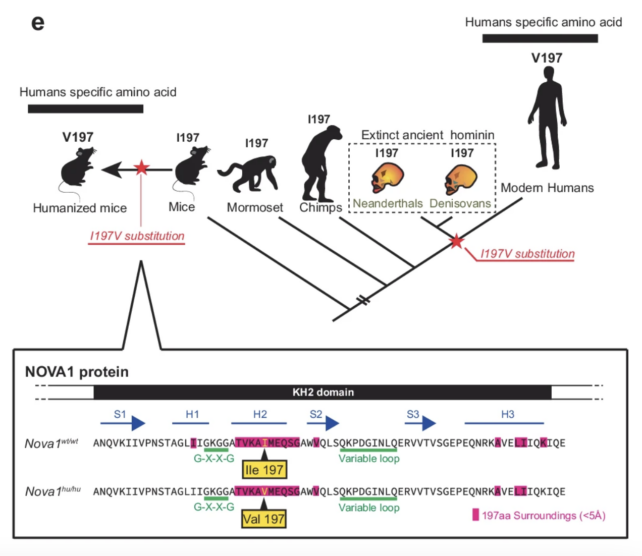
A groundbreaking discovery regarding a potential ‘language gene’ may alter the way mice communicate when this gene is integrated into their genetic makeup.
This gene, known as NOVA1, is quite distinct in humans. While most mammals share a similar variant of NOVA1, humans possess a unique version with a single amino acid alteration in their genetic sequence.
Researchers from Rockefeller University and Cold Spring Harbor Laboratory in New York suggest that this minor modification could have significantly influenced the development of spoken language and the evolutionary journey of Homo sapiens.
Interestingly, neither Neanderthals nor Denisovans possess this variant, indicating that it likely emerged within the last few hundred thousand years after our species diverged from these extinct relatives.
Other candidates for ‘language genes’, such as FOXP2, which also influence the vocalizations of mice, are present in the genetic material of Neanderthals. Although these genes may have contributed to the origins of human language, they might not be the primary factors in our species’ recent evolutionary triumphs.
While the language capabilities of our extinct ancestors remain unclear, the recent adaptation of NOVA1 has proven to be highly advantageous within the human genome.
Analysis of over 650,000 human DNA samples revealed only six unidentified individuals lacking the contemporary variant of NOVA1, with no further information available about these persons.
According to geneticist Wolfgang Enard, who previously studied the FOXP2 gene, NOVA1 represents a novel player in the realm of complex human language origins.
“This gene is part of a broad evolutionary transformation in early modern humans and suggests potential ancient beginnings for spoken language,” asserts neuro-oncologist Robert Darnell from Rockefeller University, who has been investigating the gene’s relationship to diseases and cognitive functions since the early 1990s.
“While NOVA1 might be a legitimate candidate for a human ‘language gene,’ it is surely just one of many genetic alterations unique to our species.”

Experiments conducted by Darnell and his team on mice with the human variant of NOVA1 revealed changes in their vocalizations. Although both adult and juvenile mice maintained similar volumes of sound, their patterns of communication shifted.
Genetically altered pups produced higher-frequency ultrasonic squeaks. These vocalizations did not grab their mothers’ attention more than typical pups, but they may suggest an increased attempt at social engagement, even if unsuccessful.
In adult male mice, courtship calls became more complex with the human NOVA1 modification, but they didn’t shift to a higher pitch like the juvenile mice.
“They communicated differently with female mice,” explains Darnell. “Such changes in vocalizations could have significant implications for evolution.”
The reason behind the altered sounds produced by the mice with the human NOVA1 variant remains unknown, prompting Darnell and his colleagues to investigate. They speculate that this variant may induce molecular alterations in specific regions of the mouse brain, possibly impacting areas involved in vocalization within the midbrain, brainstem, or even advanced regions in the cortex that govern pitch and frequency.
The NOVA1 gene acts as a ‘master gene regulator‘ due to its influence on over 90% of human genes during developmental processes.
NOVA1 produces a protein named Nova-1, which is capable of cutting out and rearranging segments of messenger RNA when it binds to neurons. This process alters how brain cells produce proteins, likely leading to molecular diversity in the central nervous system.
Upon humanizing mice with the NOVA1 variant, Darnell and his team noted molecular changes in RNA splicing within brain cells, particularly in areas linked to vocal behavior.
“We thought, wow. We did not anticipate that,” Darnell recounts. “It was a genuinely surprising moment in our research.”

Studying NOVA1 has formed a significant part of Darnell’s career journey.
NOVA1 is believed to aid in learning regulation in humans, and mutations in this gene have been linked to severe psychiatric disorders and motor development anomalies.
Its function in speech development is just beginning to be understood, and while there are many uncertainties, the implications are substantial.
“Our findings indicate that an ancestral group of modern humans in Africa developed the human-specific variant I197V, which later gained prevalence, likely because it provided advantages in vocal communication,” suggests Darnell.
“This population subsequently migrated out of Africa, spreading globally.”
No doubt engaging in conversation along the way.
The findings from this research were published in Nature Communications.









